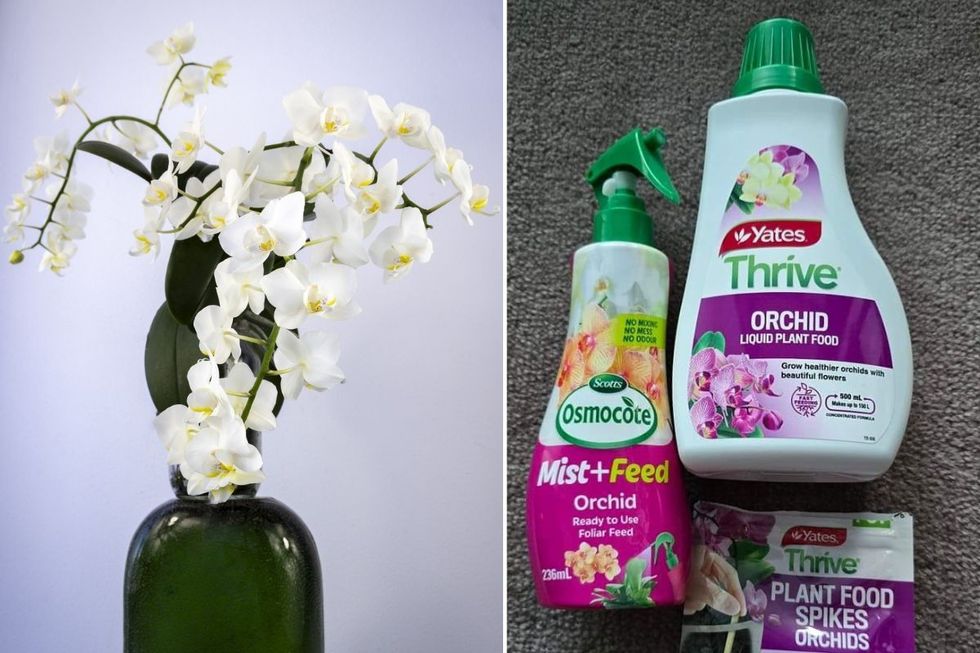Orchids thrive in humid conditions
GETTY
Mastering the art of orchid fertilisation is an incredibly rewarding process
Don't Miss
Most Read
Trending on GB News
Few house plants are as popular as the orchid, and it’s easy to see why. The plants, however, have peculiar needs.
Fortunately, the Orchid Tips and Tricks group on Facebook offer a wealth of information to get the most from your plants.
Taking to the Facebook group, Orchid enthusiast Clarissa Human, recently shared her success using fertiliser.
She wrote: “My largest is a White Phalaenopsis with 40 flowers and two stems (compared to 12 flowers and one stem last year)."
When asked in the comments what fertiliser she uses, the gardening expert listed the three following products:
- Yates 500mL Thrive Orchid Liquid Plant Food
- Scotts Osmocote Mist and Feed Orchid
- Yates Thrive Plant Food Spikes

The orchid fan claimed her plant pushed out 40 flowers
FACEBOOK / CLARISSA HUMAN
Proper fertilisation is crucial for the health and growth of orchids, but striking the right balance is key.
Over-fertilising is a common cause of dry leaf tips and burned roots, while under-fertilising can result in smaller plants.
Although some experts recommend feeding plants once a month, others prefer the “weekly, weakly” approach.
This gentle and consistent feeding regimen is deemed optimal for vigorous growth without risking damage from over-fertilisation.
It typically involves using a fertiliser with a ¼ to ½ strength, applying the product three out of every four weeks.
This gentle but consistent feeding regimen supports vigorous growth without risking damage from over-fertilisation.
Seasonal adjustments to fertilisation are essential for optimal orchid care, however.
During the growing season, which typically starts around autumn, weekly fertilisation is recommended.
However, in winter, when the plant is dormant, the frequency should be reduced to once a month and the concentration of fertiliser should be halved.
This will ensure the orchids receive appropriate nutrition year-round, according to experts.
LATEST DEVELOPMENTS
 Dividing orchids can boost floweringGETTY
Dividing orchids can boost floweringGETTYTemperature fluctuations can also play a crucial role in encouraging orchids to bloom.
Experts at the Royal Horticultural Society advised: "Some orchids are difficult to coax into bloom more than once, especially if you're growing them in the house.
"But there's one easy trick that helps enormously: make sure the temperature at night is lower than the day temperature."
The simple technique mimics natural conditions and can significantly increase the likelihood of successful flowering, even for challenging orchid varieties.








